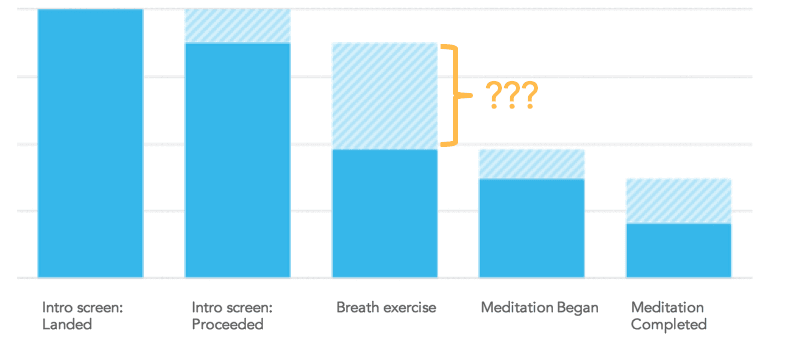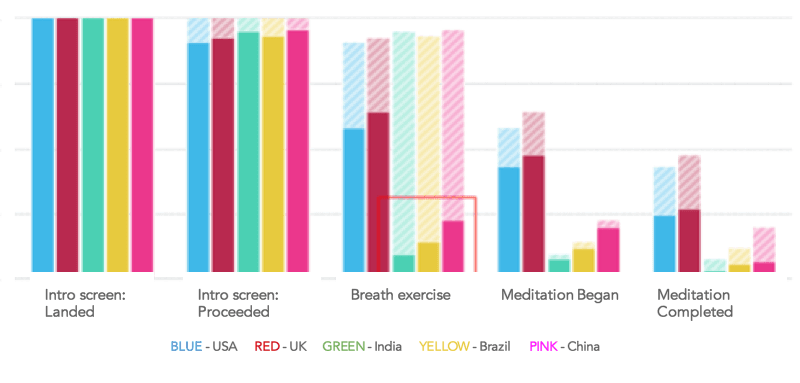4 Steps to Measure User Onboarding the Right Way
By taking a quantitative approach to your user onboarding, you open yourself up to more opportunities to increase conversion from sign-up to activation.
_Have questions about user onboarding? Our friends at Appcues have put together the ultimate resource to lay those questions at rest. Check out _**76 Tips to Optimize User Onboarding **to learn how you can take your onboarding to the next level.
User onboarding is your product’s first impression. It’s your one chance to blow new users away and get them on track to coming back. Spend time crafting a stellar onboarding flow that shows off your product’s value and you’ll be able to shift your entire retention curve up. Sometimes, though, it’s not exactly clear where to start optimizing your onboarding flow. Should you change the order of your screens? Rewrite the copy? Revamp the flow completely? This is where your analytics can help. Here are four steps to using measuring your onboarding so you can find prime opportunities for optimization. [Tweet “4 Steps to Measuring User #Onboarding the Right Way @amplitudemobile @appcues”] These steps are best illustrated with an example; here’s one from customer of ours, Calm. Calm is a mindfulness and wellness app that encourages its users to take part in daily, self-guided meditation.
Step 1: Map out the user journey from sign-up to activation
Calm has a well-defined onboarding sequence that users go through the first time they open the app. Their first-time experience starts with an introduction screen, then a breathing exercise, and then guides users through a short meditation session. All of these steps happen before placing the user in the main app experience, with the idea that these steps will educate a new user and quickly show them the value of Calm, making them more likely to use the app successfully and retain long-term.

Step 2: Create a version of this funnel in your analytics tool
Make sure your you have the analytics in place to collect event data from each of these steps. The best way to quantitatively understand how users move through your onboarding flow is through funnel analysis. Here’s what Calm’s onboarding funnel looks like in Amplitude.

Step 3: Identify your biggest dropoffs
Here we can see that the largest drop-off is for the Breath Exercise step. Nearly half of users are not finishing the breathing exercise and moving on in the funnel. The funnel shows us that out of all these steps, the breathing exercise needs the most improvement and should be focused on first.

Step 4: Find opportunities for experimentation
To investigate further, Calm should start by examining the users who dropped off at the breath exercise step and see what they did instead. Did they ever come back to the app, despite skipping part of the onboarding? Is the breath exercise a necessary part of the onboarding flow? What if they test taking it out altogether and measure how users convert? Experimenting with some of these ideas will help Calm hone in on the ideal onboarding experience that gets the maximum number of new users to quickly see Calm’s value. Another way to identify opportunities for experimentation is by segmenting your new users and seeing if certain groups of new users behave differently from others. For example, let’s segment Calm’s onboarding funnel by the top 5 countries where new users are coming from. Interestingly, we can see that at the Breath Exercise step (the step with the largest overall dropoff in the funnel), the largest dropoff happens for users in India, Brazil, and China. Users in the United States and United Kingdom have a significant drop-off at this step, but it’s nowhere near the other three countries. Could this country-specific dropoff be due to a language barrier? This is a hypothesis that warrants experimentation.

Takeaway
By taking a quantitative approach to your user onboarding, you open yourself up to more opportunities to increase conversion from sign-up to activation. Show users the value of your product in those first few minutes and they may be users for life. [Tweet “Take a quantitative approach to your user #onboarding @amplitudemobile @appcues”] For more strategies on how to analyze and improve new user retention, be sure to sign-up to receive our Retention Playbook.


Archana Madhavan
Senior Learning Experience Designer, Amplitude
Archana is a Senior Learning Experience Designer on the Customer Education team at Amplitude. She develops educational content and courses to help Amplitude users better analyze their customer data to build better products.
More from Archana




